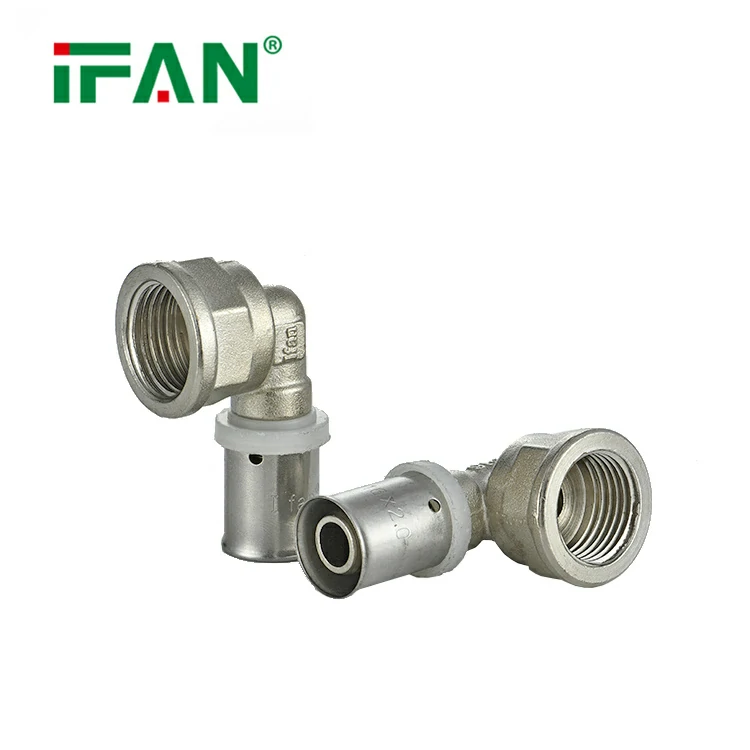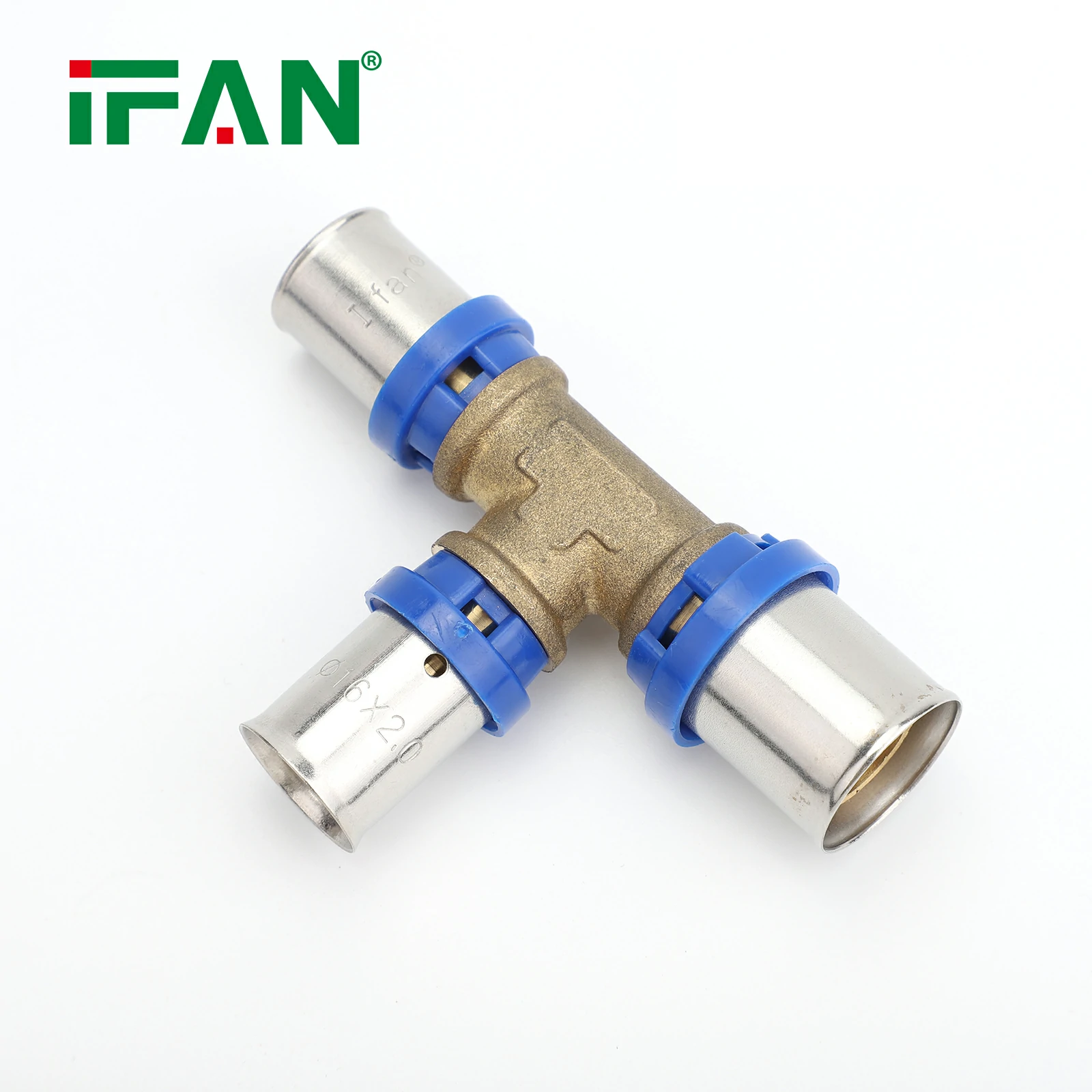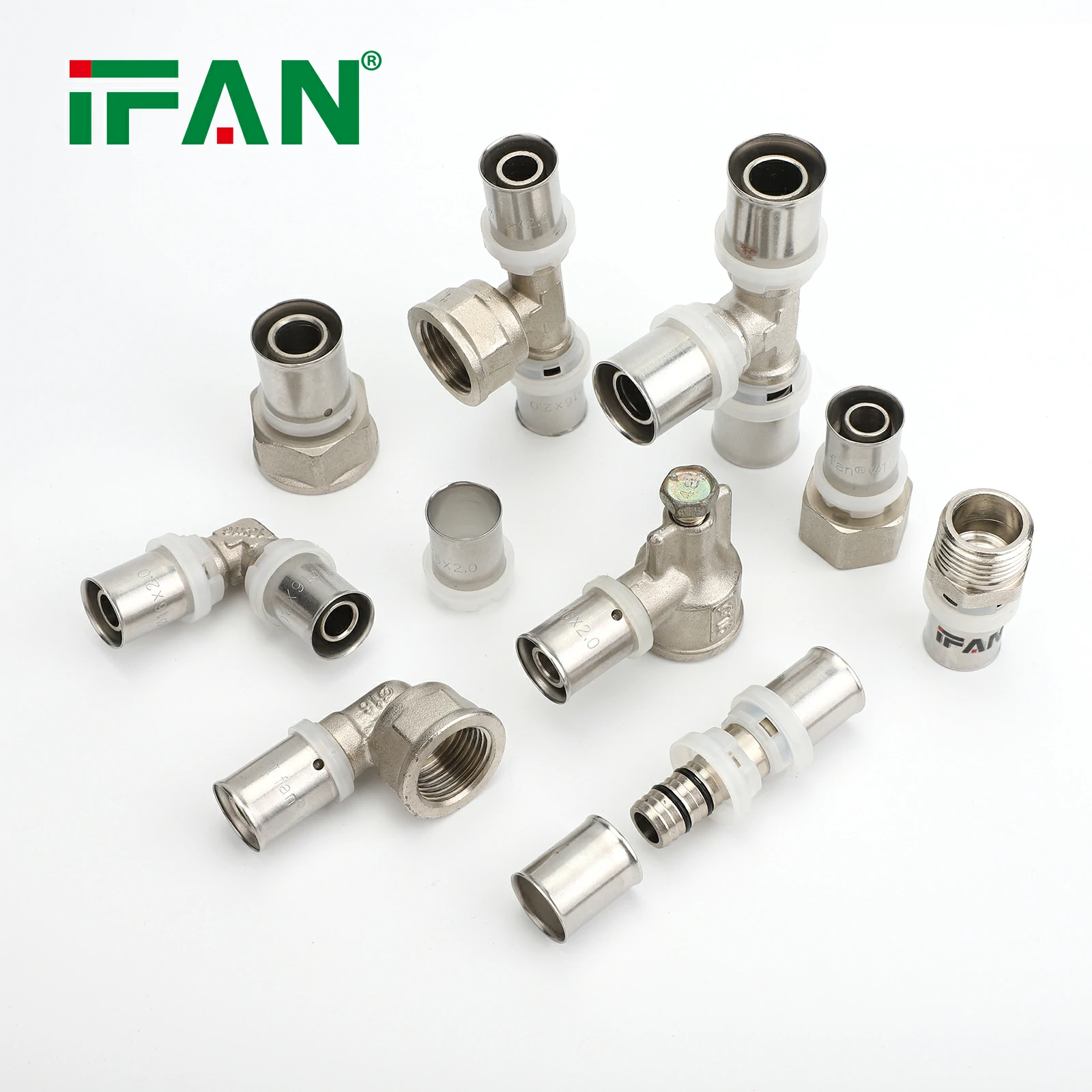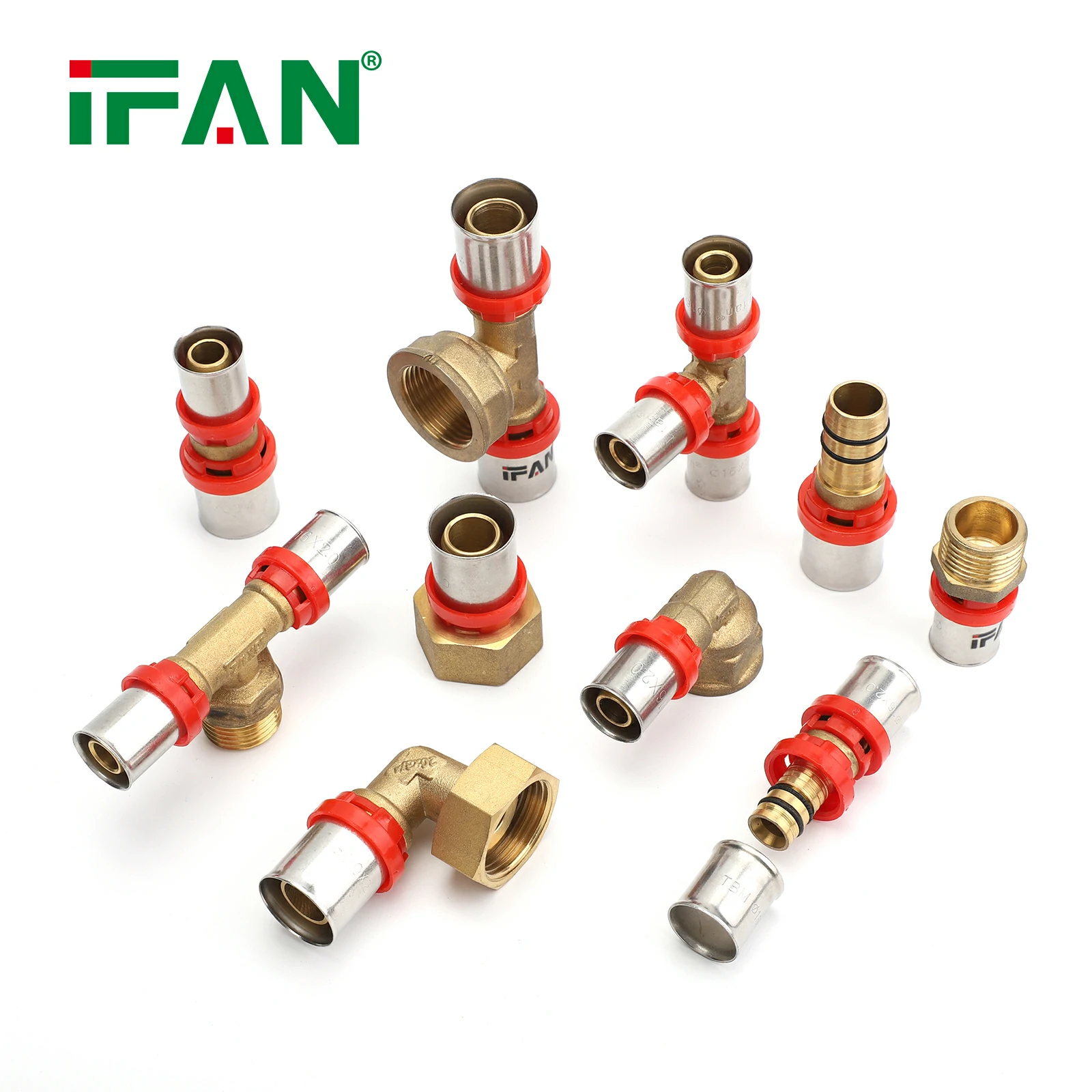IFAN factory 30+ years manufacture experience support color /size customization support free sample.Welcome to consult for catalog and free samples.This is our Facebook Website:www.facebook.com,Click to watch IFAN’s product video.Compared with Tomex products, our IFAN products from quality to price are your best choice, welcome to buy!
Meta Description: Learn how to choose the right PEX press fitting for your plumbing project. Explore important factors, sizing, materials, and tips to ensure a perfect fit for residential and commercial plumbing.
Introduction
When it comes to plumbing installations, selecting the right materials is essential for the longevity, efficiency, and safety of the system. One of the most popular choices for modern plumbing is PEX (cross-linked polyethylene) piping, and when paired with PEX press fittings, it creates a secure, leak-free connection with ease. However, with the variety of PEX press fittings available, it can be tricky to know which one is right for your specific plumbing project.
In this article, we will walk you through the steps to choose the right PEX press fitting, covering everything from sizing to materials, and offer helpful tips to ensure your plumbing installation goes smoothly.
What Are PEX Press Fittings?
PEX press fittings are connectors used to join PEX piping. Unlike traditional methods like soldering or crimping, PEX press fittings are installed using a pressing tool that creates a tight, permanent seal around the PEX tubing. These fittings are highly reliable and are ideal for both residential and commercial plumbing projects.
Made from materials like brass, stainless steel, or composite alloys, PEX press fittings ensure a durable, corrosion-resistant, and leak-free connection. They come in various configurations and sizes to accommodate different types of plumbing needs.
Key Factors to Consider When Choosing PEX Press Fittings
Choosing the right PEX press fitting depends on several factors. Here are the key considerations to keep in mind when making your selection:

1. Size of the PEX Tubing
The first and most crucial factor when choosing a PEX press fitting is the size of the PEX tubing you’re using. PEX pipes come in various diameters, including 3/8-inch, 1/2-inch, 3/4-inch, and 1-inch. It’s essential to match the fitting size to the pipe size to ensure a proper connection.
If you’re unsure about the correct sizing, refer to the specifications of your PEX pipe or check the fitting manufacturer’s guidelines. Using the wrong size fitting can lead to leaks or an unstable connection.
2. Material of the Fitting
PEX press fittings are typically made from materials such as brass, stainless steel, or plastic composites. The material you choose depends on your project’s requirements and the environment where the fitting will be installed.
- Brass Fittings: Brass is one of the most commonly used materials for PEX press fittings due to its durability and resistance to corrosion. Brass fittings are ideal for both residential and commercial installations.
- Stainless Steel Fittings: Stainless steel is often used for systems that require extra strength, such as high-pressure applications or areas with harsh environmental conditions. They are highly resistant to corrosion and offer excellent longevity.
- Plastic Composites: These fittings are lighter than metal options and can be more affordable. However, they are less commonly used and are usually reserved for lower-pressure systems or specific plumbing needs.
3. Compatibility with PEX Tubing
Not all PEX press fittings are compatible with every type of PEX tubing. There are three main types of PEX: PEX-A, PEX-B, and PEX-C. Each type has different properties, and ensuring that the press fitting is compatible with your specific type of PEX tubing is essential for a secure connection.
- PEX-A: Known for its flexibility and resistance to freezing, PEX-A is typically the easiest to work with and often preferred for residential plumbing systems.
- PEX-B: This type is more rigid and resistant to cracking but may require special fittings or crimping tools for installation.
- PEX-C: While not as commonly used, PEX-C offers good chemical resistance and is suited for certain plumbing applications.
Check the manufacturer’s guidelines to confirm the fitting’s compatibility with your specific type of PEX pipe.
4. Pressure Rating and Application
PEX press fittings are rated for different pressure ranges, so it’s important to select fittings that match the pressure specifications for your project. Commercial plumbing systems or applications involving high water pressure may require fittings with higher pressure ratings.
For residential systems, standard PEX press fittings should suffice, but in environments with high-pressure demands or extreme conditions, opting for heavy-duty fittings made from stainless steel or high-grade brass might be necessary.
5. Ease of Installation
One of the key reasons PEX press fittings are so popular is their ease of installation. The installation process requires a specialized pressing tool to secure the fitting onto the tubing, and unlike crimping or soldering, no heat or flame is needed. If you’re a DIY enthusiast or a plumber, it’s crucial to consider the tools and equipment needed for installation.
Ensure that you have the right pressing tool and that it is compatible with your selected PEX fittings. Some tools are designed to handle specific sizes, while others are adjustable for multiple sizes.
Tips for Choosing the Right PEX Press Fitting
Here are some practical tips to help you make the right choice when selecting PEX press fittings:
- Always Match Fitting Size to PEX Pipe Size: Ensure that the PEX press fitting is the correct size for the pipe you’re using. A loose fit can lead to leaks, while an over-tight fit may cause damage to the tubing.
- Opt for High-Quality Materials: Always choose high-quality brass or stainless steel fittings for durability, especially in commercial or high-pressure plumbing systems.
- Consider the Installation Environment: Think about where the plumbing will be installed. If you’re working in confined spaces or areas prone to vibration, flexibility and ease of installation should be top priorities.
- Check Manufacturer Specifications: Different brands may have slightly different sizing or materials, so always verify the fitting’s compatibility with your PEX tubing.
Conclusion
Choosing the right PEX press fitting for your project is critical to ensuring a secure, leak-free plumbing system. By considering the size, material, pressure rating, and compatibility with your PEX tubing, you can select the most suitable fitting for both residential and commercial plumbing applications. With the correct tools and fittings, you’ll be able to complete your plumbing installation quickly and efficiently.
Remember that the benefits of using PEX press fittings—speed, reliability, and leak-free performance—make them an excellent choice for any plumbing project. Follow these guidelines to ensure you make the best decision for your system, ensuring longevity and minimizing maintenance costs in the future.
Frequently Asked Questions (FAQs)
1. What are PEX press fittings?
PEX press fittings are connectors used to join PEX pipes. These fittings are installed using a hydraulic pressing tool, creating a tight, permanent seal.
2. How do I install PEX press fittings?
Installation involves cutting the PEX pipe, inserting the press fitting, and using a pressing tool to secure the fitting onto the pipe, creating a leak-free connection.
3. Are PEX press fittings compatible with all types of PEX pipe?
No, PEX press fittings are made for specific types of PEX tubing (PEX-A, PEX-B, or PEX-C). Always check compatibility before installation.
4. What material is best for PEX press fittings?
Brass and stainless steel are the most common materials used for PEX press fittings. Brass is durable and corrosion-resistant, while stainless steel is ideal for high-pressure applications.
5. Can I use PEX press fittings for both residential and commercial plumbing?
Yes, PEX press fittings are suitable for both residential and commercial plumbing systems. However, for high-pressure or demanding applications, stainless steel fittings are often recommended.
This article is optimized for SEO with targeted keywords like “PEX press fittings” and “choosing the right PEX fitting,” ensuring that it ranks well in search engines for those looking for reliable plumbing solutions.






